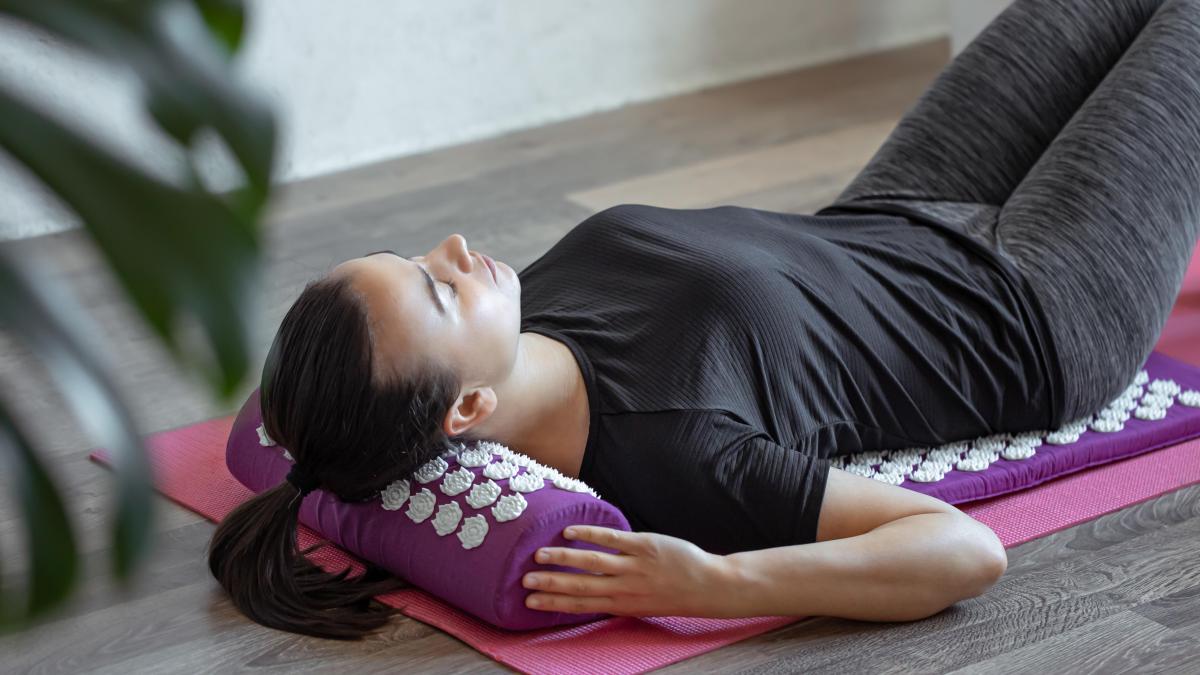Exploring the Benefits and Usage of Acupressure Mats
Introduction: Understanding the Need for Relaxation in Modern Life
In today’s fast-paced world, characterized by high levels of stress, poor posture due to sedentary lifestyles, and a general tendency towards physical inactivity, finding moments of relaxation has become increasingly essential. To achieve a sense of relaxation and overall well-being, experts often advocate for regular physical exercise, maintaining a balanced diet, and ensuring adequate sleep of at least eight hours each day.
However, beyond these fundamental lifestyle adjustments, individuals may seek specific practices to alleviate stress and reconnect with their bodies. One such example is the use of techniques or disciplines to reduce stress, such as pilates, yoga, or meditation, which can be conveniently practiced at home without the need for extensive resources.
In recent weeks, there has been growing interest in acupressure mats, individual pads designed to passively relax different parts of the body. This surge in interest, reflected in Google searches and TikTok hashtags, prompts inquiries about whether these mats can aid in reducing inflammation, improving digestion, or relieving back pain. In this exploration, we delve into the concept of acupressure, examine the potential benefits of acupressure mats, discuss their usage, and present a selection of recommended products for those interested in trying them out.
Understanding Acupressure
Acupressure is a technique derived from traditional Chinese therapeutic practices, involving the application of pressure to specific points on the body to stimulate the area, induce relaxation, and alleviate various muscular discomforts or stress-related issues. Pressure can be applied using hands or other accessories, such as acupressure mats.
Exploring the Benefits of Acupressure Mats
The primary feature of acupressure mats is the incorporation of spikes or “flowers” with protruding plastic or other materials onto a mat or pad. These spikes, when laid upon or stood upon, exert additional pressure on various parts of the body. While some individuals and studies suggest that using acupressure mats may have therapeutic benefits or help reduce muscular pain, scientific evidence supporting these claims remains inconclusive, as research into their efficacy has not yielded definitive results.
Nevertheless, proponents of acupressure mats highlight their ability to induce relaxation and improve blood circulation, making them potentially beneficial for individuals experiencing such issues.
How to Use Acupressure Mats
Using acupressure mats is relatively straightforward. As explained by journalist Laura Román, who has tested several top-rated models, one simply needs to place the mat on the floor, bed, or sofa, lie down on it, and remain in that position for approximately 15 minutes.
To enhance their effectiveness, Román suggests using the mats without clothing or with very thin garments. It’s important to note that some individuals may find the initial sensation of pressure uncomfortable.
One of the primary advantages of acupressure mats is their self-use nature, eliminating the need for assistance from others. They can be incorporated into daily routines, such as reading, watching television, or engaging in other static activities. Additionally, they typically come with a storage bag, allowing for easy transportation and use anywhere.
Recommended Acupressure Mats
For those interested in exploring the potential benefits of acupressure mats, we have curated a selection of products available online, each with favorable reviews from consumers:
- Acupressure Kit by Fitem
- Materials: Cotton and plastic
- Dimensions: 68 x 42 centimeters
- Inclusions: Mat, pillow, massage ball, and bag
- Colors: Five options
- Acupressure Mat with Pillow by Tunturi
- Materials: Cotton and plastic
- Dimensions: 42 x 68 centimeters
- Inclusions: Pillow, mat, and carrying case
- Color: Black
- ShaktiMat Acupressure Mat for Relaxation and Massage
- Materials: Organic cotton and ABS plastic
- Dimensions: 75 x 40 centimeters
- Inclusions: Mat
- Colors: Six options
- Bed of Nails Acupressure Mat
- Materials: Non-toxic ABS plastic and cotton
- Dimensions: 74 x 42 centimeters
- Inclusions: Mat and bag
- Colors: Three options
- Acupressure Mat with Pillow by Lidl
- Materials: Cotton and plastic
- Dimensions: 66 x 41 centimeters
- Inclusions: Mat and pillow
- Colors: Two options
- Padded Acupressure Mat by Oromed
- Materials: Linen and coconut fiber mat
- Dimensions: 43 x 67 centimeters
- Inclusions: Pillow, mat, and bag
- Color: Green
- Pranamat Eco Massage Mat
- Materials: HIPS plastic, linen, cotton, and coconut fiber
- Dimensions: 73 x 45 centimeters
- Inclusions: Mat
- Colors: Six options
- Acupressure Mat by Nature et Decouvertes
- Materials: Cotton and linen
- Dimensions: 88 x 42 centimeters
- Inclusions: Mat and bag
- Color: Beige
- Wellax Acupressure Mat
- Materials: Cotton, linen, coconut fiber, buckwheat husks, and HIPS plastic
- Dimensions: 45 x 73 centimeters
- Inclusions: Mat, pillow, and bag
- Color: Orange
Conclusion: Embracing the Potential of Acupressure Mats
While acupressure mats continue to gain popularity, it’s essential to approach their usage with realistic expectations and an understanding of their limitations. While anecdotal evidence suggests that some individuals may experience benefits such as relaxation and improved circulation, scientific validation of their therapeutic efficacy remains elusive.
Nevertheless, for individuals seeking alternative methods to alleviate stress and promote relaxation, acupressure mats present a convenient and accessible option. As with any wellness practice, it’s advisable to consult with healthcare professionals before incorporating acupressure or any related therapies into one’s routine, particularly for individuals with underlying health conditions.
In conclusion, while the scientific jury may still be out on the definitive benefits of acupressure mats, their growing popularity underscores a broader cultural shift towards prioritizing self-care and holistic well-being in an increasingly stressful world.










